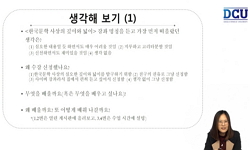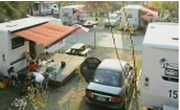베트남은 다민족 국가로 베트남 족과 54개의 소수민족이 살고 있다. 이들 대부분은 산악지역이나 고원지대에 거주하면서 유목과 화전 농작을 주업으로 하고 있으며 각 민족의 독특한 문화와...
http://chineseinput.net/에서 pinyin(병음)방식으로 중국어를 변환할 수 있습니다.
변환된 중국어를 복사하여 사용하시면 됩니다.
- 中文 을 입력하시려면 zhongwen을 입력하시고 space를누르시면됩니다.
- 北京 을 입력하시려면 beijing을 입력하시고 space를 누르시면 됩니다.
부가정보
국문 초록 (Abstract)
베트남은 다민족 국가로 베트남 족과 54개의 소수민족이 살고 있다. 이들 대부분은 산악지역이나 고원지대에 거주하면서 유목과 화전 농작을 주업으로 하고 있으며 각 민족의 독특한 문화와 생활방식을 간직하고 있다. 이 중 몽족은 베트남 소수민족의 1.03%를 차지하고 있으며 현재 베트남북부 고원지의 계곡에는현재 79만 명의 몽족이 살고 있다. 언어는 먀오어를 사용하고 있으며 종교는 샤머니즘과 불교, 기독교를 믿고 있다.
몽족은 각 부족이 집단으로 모여 공동체를 이루고 생활하는데 부족장은 공공의 문제를 관리한다. 주로 화전이나 계단식 밭을 사용하여 생활에 필요한 식량과 옷감을 자급자족하며 특히 부족내의 결혼은 허락되지 않고 “약탈혼(약탈결혼)”과 “hay pu”라는 독특한 결혼관습을 통해 결혼이 이루어진다.
베트남의 몽족 집단은 몽트랭, 몽호아, 몽덴, 몽도 및 몽산 등, 몇 개의 하위집단으로 구분하는데 이들은 서로 다른 방언을 사용하고 다른 문화적 전통을 가지고 있다. 그러나 복식은 각 집단에 따라 패턴, 구조, 색채조합 등 구성법에 약간의 차이가 있을 뿐 일반적으로 인디고 블루 색으로 염색한 아마섬유(린넨)의 옷을 입는 공통점을 가지고 있다. 특히 몽족 여자복식은 공통적으로 빨강, 노랑, 파랑과 검정을 사용하여 바틱 염색을 하거나 풍부하고 화려한 색채로 정교하게 장식한 주름치마를 착용하며 그 위에 앞치마를 두르고 치마 밑에 방퇴(레깅스의 일종)를 착용한다. 화려한 색채의 수가 놓여 있으며 오른쪽 어깨에 앞트임이 있는 상의를 입고, 은과 유리구슬 및 색을 입힌 술 장식과 팔찌, 목걸이, 귀걸이 및 반지 등으로 치장하고 머리에 터번이나 스카프를 둘러 장식하는 기술과 감각이 뛰어난 민족이다. 모든 몽족 남자의 복식은 각 집단 마다 색채와 디자인에서 약간의 차이가 있지만 집단 간의 복식 형태가 여자들의 복식과는 달리 별 차이가 없을 정도로 공통적인 부분이 더 많다. 대부분 가랑이가 낮게 내려오는 바지를 입고 측면에 단추가 달리고 배의 일부가 보일 정도로 짧고 기본형 상의를 집단의 구별 없이 공통적으로 입는다.
따라서 몽족의 전통적인 복식 문화를 살펴보면 각 집단 간에 차이는 있으나 옷감을 구하고 염색하고 제작하는 방법이 거의 비슷하고 복식에 사용되는 화려한 장식과을 신구들은 그들만의 독특한 복식미를 보여 준다.
다국어 초록 (Multilingual Abstract)
Vietnam is composed of 54 minority peoples excluding major Vietnamese people. Most of minority peoples live a nomadic or slash-and-burn agriculture life in mountain and high-land areas, and keep their own cultures and life styles. Among them, Mong peo...
Vietnam is composed of 54 minority peoples excluding major Vietnamese people. Most of minority peoples live a nomadic or slash-and-burn agriculture life in mountain and high-land areas, and keep their own cultures and life styles. Among them, Mong people, occupying about 1.03% of minority peoples (about 0.79 million), live in valleys of northern high-land areas. Their language is Myao-language, and their religions are Shamanism, Buddhism, and Christianity.
Mong people are established by a tribal community of several tribes, whose head takes care of official and public affairs. The wedding between Mong people is not permitted, but is accepted as a peculiar "Hay Pu", which is a kind of plunder wedding customs. They obtain all foods and clothes required for their living from slash-and-burn farms and stair-type upland fields.
Mong people are classified into several lower-ranked groups such as Mongtrang, Monghoa, Mongden, Mongdo, and Mongsan, whose cultural traditions are slightly different. These people groups use their own dialect, and wear blue-colored common customs made by linen, although the pattern, structure, and combination of colors are somewhat different. Particularly in common characteristics of women’s customs, batik technique (a kind of dyeing technique) of red, yellow, blue, and black colors and decorations are popularly used. Glorious colors and delicate decorations are applied to women’s skirts, and an apron and a bangtwio (a kind of leggings) are additionally used outside and inside skirts, respectively. Jackets are embroidered by glorious colors, and are decorated by silver- or glass-beads and colorful tassels. Women usually wear wristlets, necklaces, and earrings, and rings as well as turbans and kerchiefs on heads. Men’s customs are mainly composed of pants having low crotches and short basic-styled jackets whose sides are attached by buttons, while colors and designs are slightly different in men’s customs of each group.
According to aforementioned traditional custom cultures of Mong people, Mong people show their own beautiful customs decorated by glorious personal ornaments and accessories, and fabrication and dyeing techniques of clothes are almost similar in each people group.
참고문헌 (Reference)
1 "중국 운남 민족문화전"
2 김선자, "중국 소수민족 신화기행" 안티쿠스 2009
3 정미숙, "중국 귀주성 묘족(苗族)여자 복식의 구성과 수공예 기법" 서울여자대학교 대학원 2010
4 "http://www.vnnews.kr/pages/contents/content"
5 "http://www.vnnews.kr/pages/contents/content"
6 "http://www.segye.com/articles/components/func"
7 "http://ko.wikipedia.org/wiki"
8 "Vietnam Museum of Ethnology" Tran Phu printing Company 1998
9 Nguyen Van Huy-Le Duy-Nguyen Quy Thao-Vu Xuan Thao, "The great family of ethnic groups in Vietnam" Xuat Ban Giao Duc Viet Nam 2009
10 NGO DUE THINTH, "TRADITIONAL COSTUMES OF Viet Nam" THE GIOI PUBLISHERS 2009
1 "중국 운남 민족문화전"
2 김선자, "중국 소수민족 신화기행" 안티쿠스 2009
3 정미숙, "중국 귀주성 묘족(苗族)여자 복식의 구성과 수공예 기법" 서울여자대학교 대학원 2010
4 "http://www.vnnews.kr/pages/contents/content"
5 "http://www.vnnews.kr/pages/contents/content"
6 "http://www.segye.com/articles/components/func"
7 "http://ko.wikipedia.org/wiki"
8 "Vietnam Museum of Ethnology" Tran Phu printing Company 1998
9 Nguyen Van Huy-Le Duy-Nguyen Quy Thao-Vu Xuan Thao, "The great family of ethnic groups in Vietnam" Xuat Ban Giao Duc Viet Nam 2009
10 NGO DUE THINTH, "TRADITIONAL COSTUMES OF Viet Nam" THE GIOI PUBLISHERS 2009
11 "54 ETHNIC GROUPS IN VIETNAM" NHA XUAT BAN THONG TAN 2008
동일학술지(권/호) 다른 논문
-
- 한국역사민속학회
- 윤양노
- 2010
- KCI등재
-
조선후기 類書類의 平生儀禮 -『芝峰類設』․『星湖僿說』․ -『松南雜識』를 중심으로-
- 한국역사민속학회
- 정종수
- 2010
- KCI등재
-
- 한국역사민속학회
- 조선희
- 2010
- KCI등재
-
- 한국역사민속학회
- 이필영
- 2010
- KCI등재
분석정보
인용정보 인용지수 설명보기
학술지 이력
| 연월일 | 이력구분 | 이력상세 | 등재구분 |
|---|---|---|---|
| 2026 | 평가예정 | 재인증평가 신청대상 (재인증) | |
| 2020-01-01 | 평가 | 등재학술지 유지 (재인증) |  |
| 2019-12-31 | 학술지명변경 | 외국어명 : The Journal of Korean Historical-forklife -> The Journal of Korean Historical-folklife |  |
| 2017-01-01 | 평가 | 등재학술지 유지 (계속평가) |  |
| 2013-01-01 | 평가 | 등재학술지 유지 (등재유지) |  |
| 2010-01-01 | 평가 | 등재학술지 유지 (등재유지) |  |
| 2008-01-01 | 평가 | 등재학술지 유지 (등재유지) |  |
| 2005-01-01 | 평가 | 등재학술지 선정 (등재후보2차) |  |
| 2004-01-01 | 평가 | 등재후보 1차 PASS (등재후보1차) |  |
| 2002-01-01 | 평가 | 등재후보학술지 선정 (신규평가) |  |
학술지 인용정보
| 기준연도 | WOS-KCI 통합IF(2년) | KCIF(2년) | KCIF(3년) |
|---|---|---|---|
| 2016 | 0.63 | 0.63 | 0.65 |
| KCIF(4년) | KCIF(5년) | 중심성지수(3년) | 즉시성지수 |
| 0.68 | 0.66 | 1.486 | 0.06 |




 KCI
KCI






